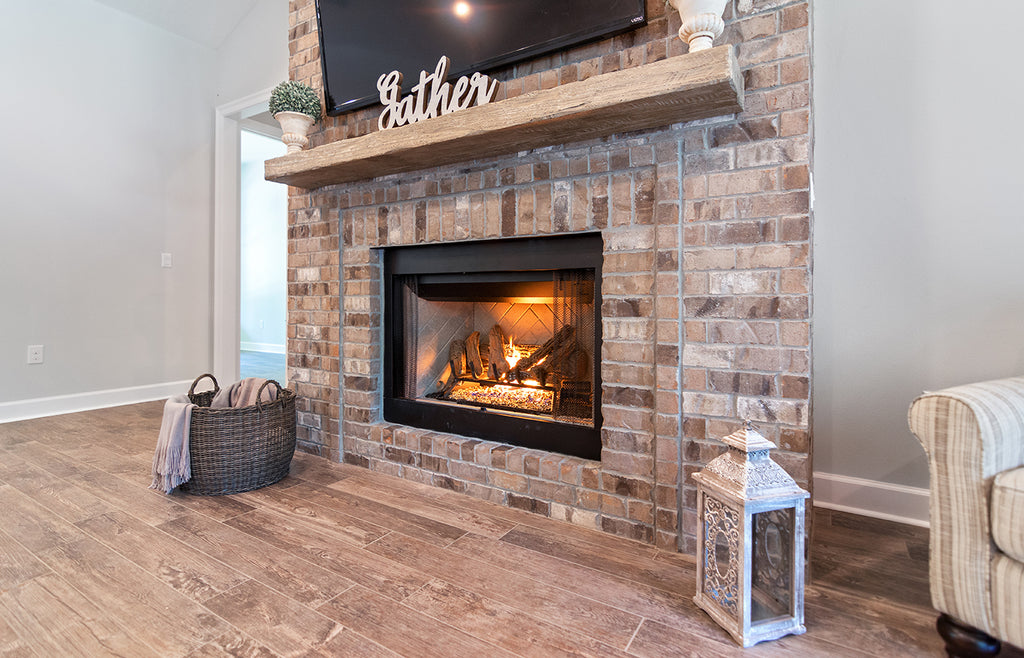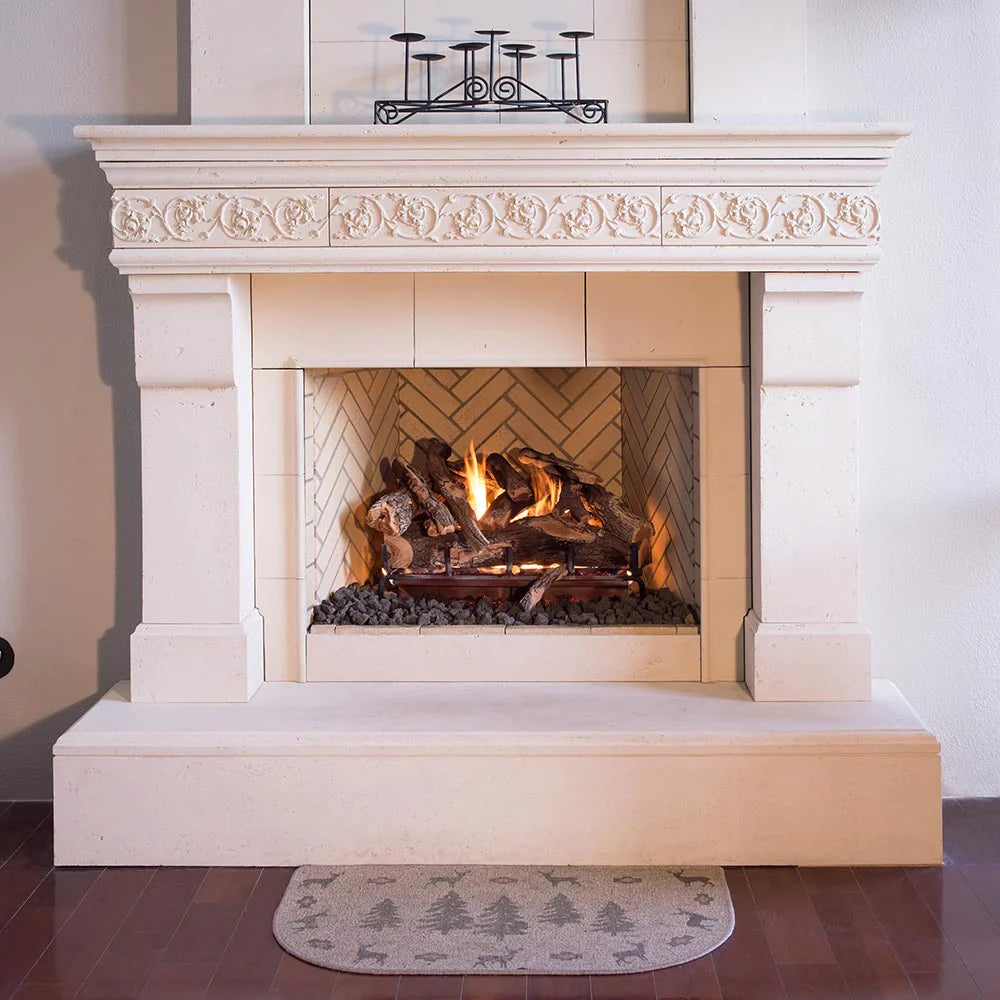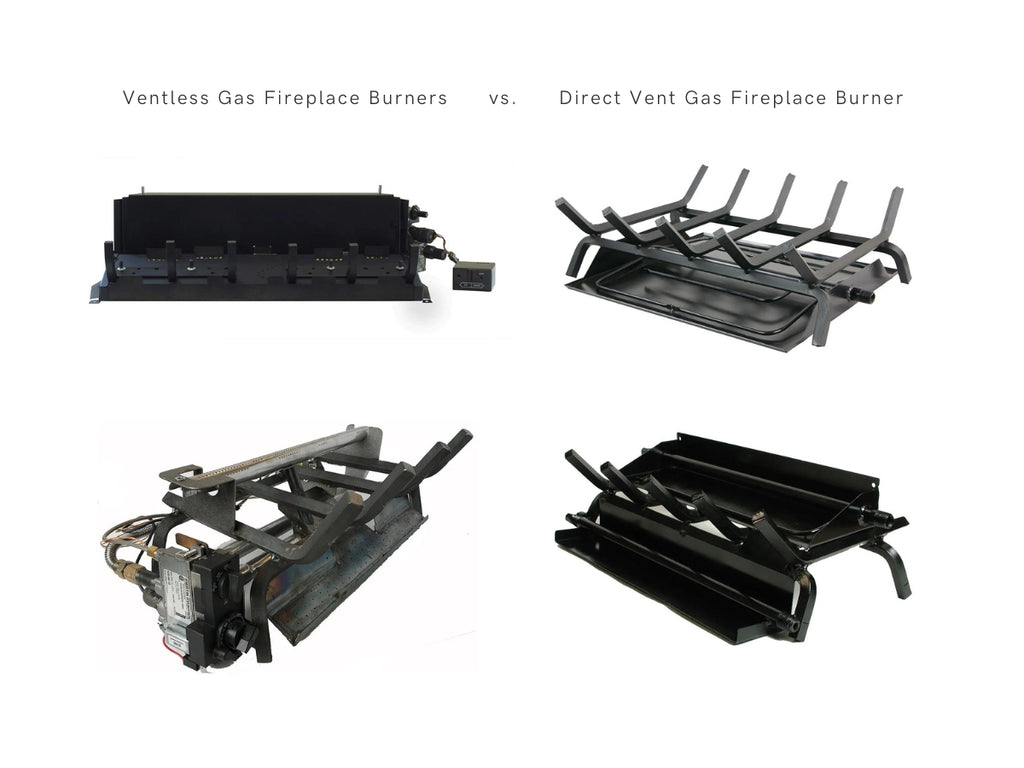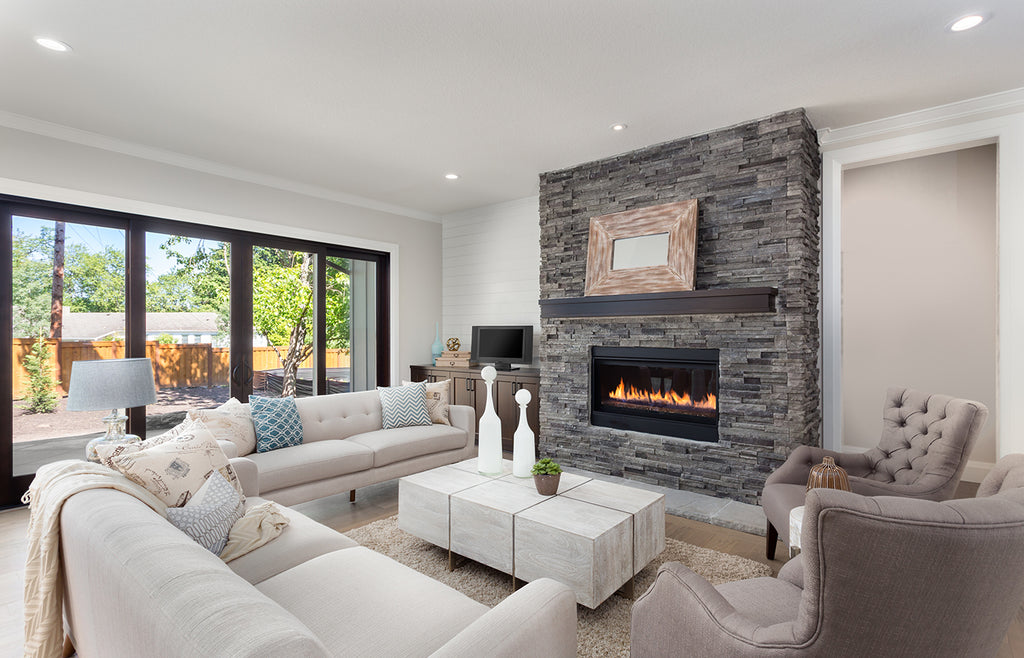Whether you're seeking customizability, utility, or versatility in your indoor gas fireplace, a gas fireplace burner gives you just the right amount of personalization and convenience. Come along with us as we explore all the ins and outs of the gas fireplace burner.
What is a gas fireplace burner?
A gas log burner is a set of tubes connected to a propane or natural gas line designed to be placed in a masonry fireplace. It can be used to help start and maintain a wood-burning fireplace, or composite logs can be placed over it for a gas-only fire.
The burner is only one component of a gas fireplace, which has the logs and included. Sometimes the logs can be rearranged, but most often, they are permanently placed. You may choose to go with a different media in place of logs like, fireglass, fireballs, etc.
The gas burner may also include technology that allows you to control turning the flame on and off and how tall the flames are. You can purchase the burner separately to upgrade or replace an old burner.
Why do you need a gas fireplace burner?
Your fireplace won’t work without a gas burner. But there are lots of other reasons why you might consider a new one.
Customizability
Choosing individual components over an all-in-one product allows for a higher degree of customization, enabling you to tailor the project precisely to your specifications. Selecting a gas fireplace burner for your indoor gas fireplace allows you to pick features and benefits without compromise, ensuring a perfect match for your needs. Additionally, many of the burner models we offer are highly customizable, with various size options, feature sets, and design styles.
Utility
Gas fireplace burners offer more than just aesthetic appeal; they are easy to install and operate, making them a valuable addition to any living space. Many models provide exceptional heat output, allowing for efficient zone heating and reducing overall energy consumption and gas bills.
Versatility
Designing a product to meet your specific needs provides unparalleled flexibility compared to prefabricated fireplaces. If you adhere to the size/clearance requirements and ventilation recommendations for the chosen fireplace burner model, it can be used in almost any application. Combined with easy installation and use, this product category offers remarkable versatility.
What are the gas burner types?
Gas burners are made up of tubes that transport the gas to where the flame is created. How these tubes are arranged makes different types of fire looks.
Multiple flame tubes are engineered to enhance the realism of the fire experience, especially when paired with log sets. These systems utilize multiple flame tubes strategically positioned underneath the log set to create a more authentic and natural-looking flame pattern.
Other than tube layout, there are two major categories of gas burners: direct vent and ventless. Vented log sets replicate a traditional wood-burning fireplace's look. They're installed in a chimney or venting system, offering a decorative fireplace experience by drawing air from the room for combustion and expelling emissions through the chimney.
Vent-free burners operate without a chimney or external vent. They burn gas cleanly, providing heat that stays within the room. They're highly efficient at heating spaces but require specific installation and safety considerations due to their lack of ventilation.
What are the gas fireplace burner options?
Finding the right product for your specific needs requires careful consideration. When in the market for a new indoor gas fireplace burner, keep the following factors in mind while exploring our extensive collection.
Ventilation
We offer both vented and vent-free gas fireplace burner kits. Vented units require ventilation for safe operation, while vent-free burners do not. While ventless units are more effective for heating, they may not be permitted in some local building codes, so it's crucial to check regulations in your area before making a decision.
Size
Ensure that the burner you're considering is the correct size for your project. Accurate measurements of the fireplace opening's width, height, and depth should be cross-referenced with the burner's size and the manufacturer's recommended clearances for safe operation.
How to Find the Right Size Gas Fireplace Burner
Having too large or too small a burner for your firebox (the opening where your fire goes), can cause inefficiency or can even become a risk. Start by taking the right measurements:
Width at the front of the firebox
Width at the back of the firebox
Height
Depth
Check the manufacturer instructions to determine if your chosen burner is an appropriate size for your fireplace. A good rule of thumb is that the width at the back of your firebox is at least the same measurement as the burner. However, always consult the manufacturer instructions.
The guidelines may change from unit to unit as different elements take up more space, like the ignition system.
Fuel Type
We offer both indoor propane and natural gas burners. It's crucial to purchase the correct burner configuration for your planned fuel type, as propane and natural gas are not interchangeable (some can be converted). Consulting with a licensed gas plumber can address any questions or uncertainties in this matter.
Features
Our inventory of gas log burners includes models with various design features, catering to a wide range of applications. Popular options include remote and app-enabled controls, decorative ember kits, outdoor-compatible materials, and ANSI/UL Certifications.
Whether you're embarking on the construction of an indoor gas fireplace from scratch or considering the conversion of a wood fireplace to gas, a crucial component you'll need is a gas fireplace burner. Let us simplify your search for the perfect gas fireplace burner, ensuring that your investment provides not only immediate satisfaction but also years of reliable service.



